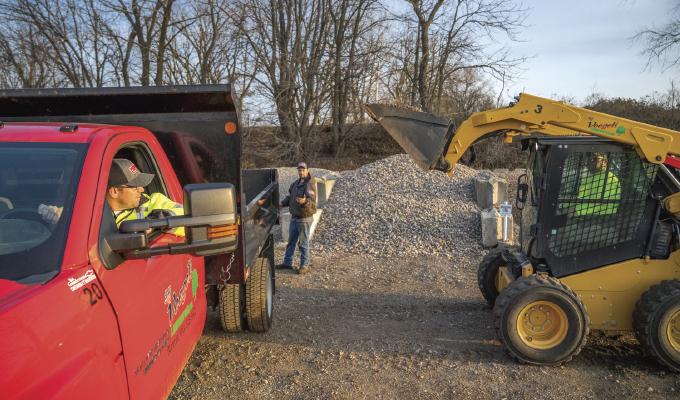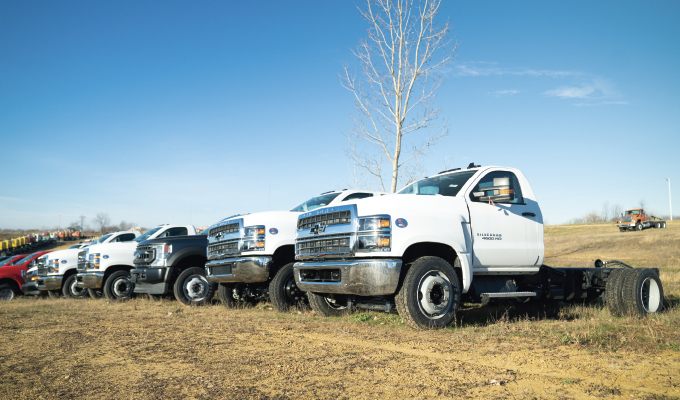Unexpected repairs can be costly, especially when a budget is already tightly delineated. Whether owning one work truck or a fleet of thousands, implementing a preventive maintenance strategy will help save money, increase safety, and ensure the best possible ROI for fleet vehicles.
PROTECT PERSONNEL
For fleets, the truck isn’t the most valuable thing on the road, it’s drivers and passengers. That’s why it’s important to ensure the safest driving experience as possible. Preventive maintenance helps fleet drivers and passengers stay safe while driving. Keeping up with repairs, top-offs, tune-ups, and having an understanding of the general health of the vehicle goes a long way in preventing harmful collisions, dangerous breakdowns, or other accidents that could compromise driver safety or the safety of others.
FEWER BREAKDOWNS
In addition to fleet safety, preventive maintenance reduces the occurrence of unexpected breakdowns. This is important because unexpected breakdowns can end up costing the fleet serious cash. First, there’s the cost of the repair itself. Depending on the severity of the breakdown, fleets might have to pay to get the vehicle towed to a shop for repairs. Then, there’s the money lost from missing any jobs as well as unhappy customers calling to complain. Minimizing the chance of breakdowns protects a fleet’s ROI and a manager’s sanity.

MAINTENANCE CHECKLIST
As stated, preventive maintenance keeps a fleet productive, safe, and increases ROI. So, how does one determine the best approach to preventive maintenance? Use the checklist below:
Electrical Systems
Checking your electric systems is an easy way to stay ahead of issues like headlight malfunctions and blown fuses. Luckily, many auto part shops offer free electrical testing, evaluating the health of the vehicle’s battery, alternator, and starter. Fleet operators can also do electric assessments at home. Electrical tests should be done yearly, and ideally, performed before the extreme cold weather comes around.
Filters
Filters are one of the simplest things any owner or operator can replace at home. Air filters protect the engine—catching dirt, dust, and debris before it can contaminate the vehicle and cause poor performance. A dirty air filter can affect gas mileage, acceleration, and carbon deposit buildup. The vehicle’s cabin air filter is just as easy to check and replace. This filter is responsible for catching impurities in the air that are brought into the cabin, where they are then inhaled by drivers and passengers. For those comfortable, owners and operators can even replace their own oil filters between oil changes, saving money at the shop.
Lighting
Every once in a while, take a look around the truck to monitor exterior lighting. Catching a burnt out headlight or brake light can prevent potentially being pulled over by the police. While checking, look at headlights, brake, signal, and hazard lights. Then go inside the cab and check for any interior lighting that may need replacement. Light bulbs are inexpensive, and regularly checking lighting is an easy way to stay safe and visible on the road.
Fluids
There are a lot of fluids that make the truck run—including motor oil, coolant, power steering, brake, windshield, and transmission fluids. These fluids are incredibly important to the smooth operation of the vehicle, and fleet vehicles should never run on low fluid levels. Most fluids can be checked at home in just a matter of minutes. Fluids can be topped off in a hurry, but make sure to regularly change these fluids according to the manufacturer’s recommendations to avoid long-term damage.
Brakes
There’s really no need to mention the importance of brake health. Brake inspection should happen at least twice a year. It can often take place when rotating tires. Brake inspections include auditing brake pads, shoes, and rotors as well as brake fluids. Brake inspections are offered at most auto shops, and the staff will recommend replacement when brakes surpass the minimum brake pad thickness. They will also be able to check for unusual wear patterns that could be the result of an unbalanced brake system.
Tires
Ensuring tires are in good shape involves a few different inspections. The first is tire pressure. Most vehicles will alert the driver when tire pressure is low, some even displaying which tire or just how low the tires may be. Maintaining OEM recommended tire pressure keeps tires in good condition for a longer amount of time, maximizing fuel economy and saving replacement costs over time. The right psi pressure ensures maximum traction with the road. Then, there’s the inspection of the tires themselves. Look for wear and thinning in the tread, and replace tires accordingly. Check the OEM recommended time frame for tire rotation, and take vehicles in for rotation to prolong the life of tires.
REGULAR INSPECTIONS
There’s a lot a fleet owner/operator can do to prevent breakdown and costly repairs. Taking work trucks to the shop for regular inspections and tune-ups is a great way to assess the overall health of vehicles and catch anything that needs mending or replacing before it causes a roadside breakdown. The Kansas Department of Transportation provides a comprehensive preventive maintenance checklist that fleet owners and auto shop mechanics can use to keep trucks in tiptop shape.
FOR MORE INFORMATION
This article was provided by Monroe Truck Equipment. Monroe Truck Equipment serves commercial customers across the country and works to find solutions for their most pressing needs. Find out more, visit www.commercial.monroetruck.com.




